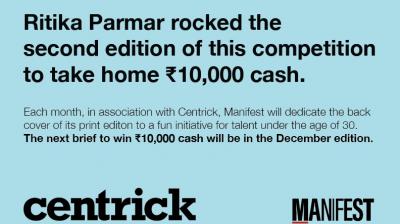Let’s be honest. Most briefs are a tidy mix of half-truths and wishful thinking. They tell you what the brand thinks it is, not what it is. They sound smart, strategic, and well-aligned, but underneath the buzzwords sits a quiet fear: 'Please don’t change too much.'
And that’s the problem. When you build from what’s already working, you’re really building from the past. You’re not branding for who the brand could become. You’re reinforcing who it used to be. That’s why the brief, at least in its usual form, is a lie.
The illusion of the brief
Most client briefs come with an air of certainty. Target audience defined, competitors mapped, insights quantified. But if you read closely, what you often see is fear. Fear of change. Fear of being wrong. Fear of losing approval.
A brief is often written as a defence document, not a discovery tool. It’s a collection of knowns that make everyone feel safe. I’ve seen briefs that spend three pages describing the competition and one line describing ambition. It tells you everything about where the brand’s energy is going.
When strategists take that at face value, they end up solving the wrong problem beautifully. They make sense of something that never made sense to begin with.
The real gold is in the blind spot
The truth isn’t in what the client tells you. It’s in what they avoid saying. It hides in the gaps, the contradictions, the 'we tried that before' moments. It lives in the tension between how the brand describes itself and how people experience it. That blind spot is where the real brief hides. It’s where the brand’s buried ambition or insecurity sits quietly, waiting to be named.
If a brand says, “We’re for everyone,” the truth probably lies in who they’re afraid to alienate.
If they say, “We’re all about innovation,” the truth might be that they’re terrified of irrelevance.
If they say, “We want to be loved,” it usually means they’ve forgotten how to be respected.
You don’t find that by reading the brief. You find it by listening for the silences between sentences.
Strategic tension: The X-ray vision
The best strategists don’t decode a brief. They provoke it. (Some also do it for the heck of it, but that topic we can save for another day) They ask the kind of questions that make a room go quiet. Not to challenge for show, but to reveal what’s real. Strategic tension is when you hold two opposing truths until something new emerges.
For example:
• “We want to be premium, but accessible.” So, are you for everyone or for someone aspirational?
• “We want to modernise but keep our heritage.” Which part of that heritage is holding you back?
• “We want to grow fast but stay authentic.” What gives when speed meets soul?
The point isn’t to remove the contradiction. It is to use it. That friction becomes the fuel for clarity.
The work behind the work
Finding the blind spot takes empathy without obedience. You must listen beyond the words. Notice body language in meetings. Catch what gets dismissed quickly. Sometimes the real brief arrives disguised as a throwaway line. “Oh, our customers don’t care about that.” (They probably do). “That’s not really our space.” (It might be).
Don’t rush to fill those gaps. Sit with them. The silence is often the insight.
We once had a client who kept repeating, “We don’t want to sound too emotional.” Turned out the category was full of emotionless brands. The opportunity was right there, hidden behind their discomfort.
The truth test
Here’s the simplest way to know you’ve hit the truth. When you say it out loud, the room goes quiet for a second. That pause means you’ve touched something real. A great strategy doesn’t just make sense. It makes people rethink their sense of things.
So, next time you get a brief
Don’t just read it. Interrogate it.
Don’t just answer it. Rewrite it.
Don’t just look for alignment. Look for friction.
Because brands don’t grow from what they already know. They grow from what they’ve been avoiding.
The brief may be a lie. But the blind spot, that’s where the truth has been hiding all along.
The author is founder-partner, ABND.










